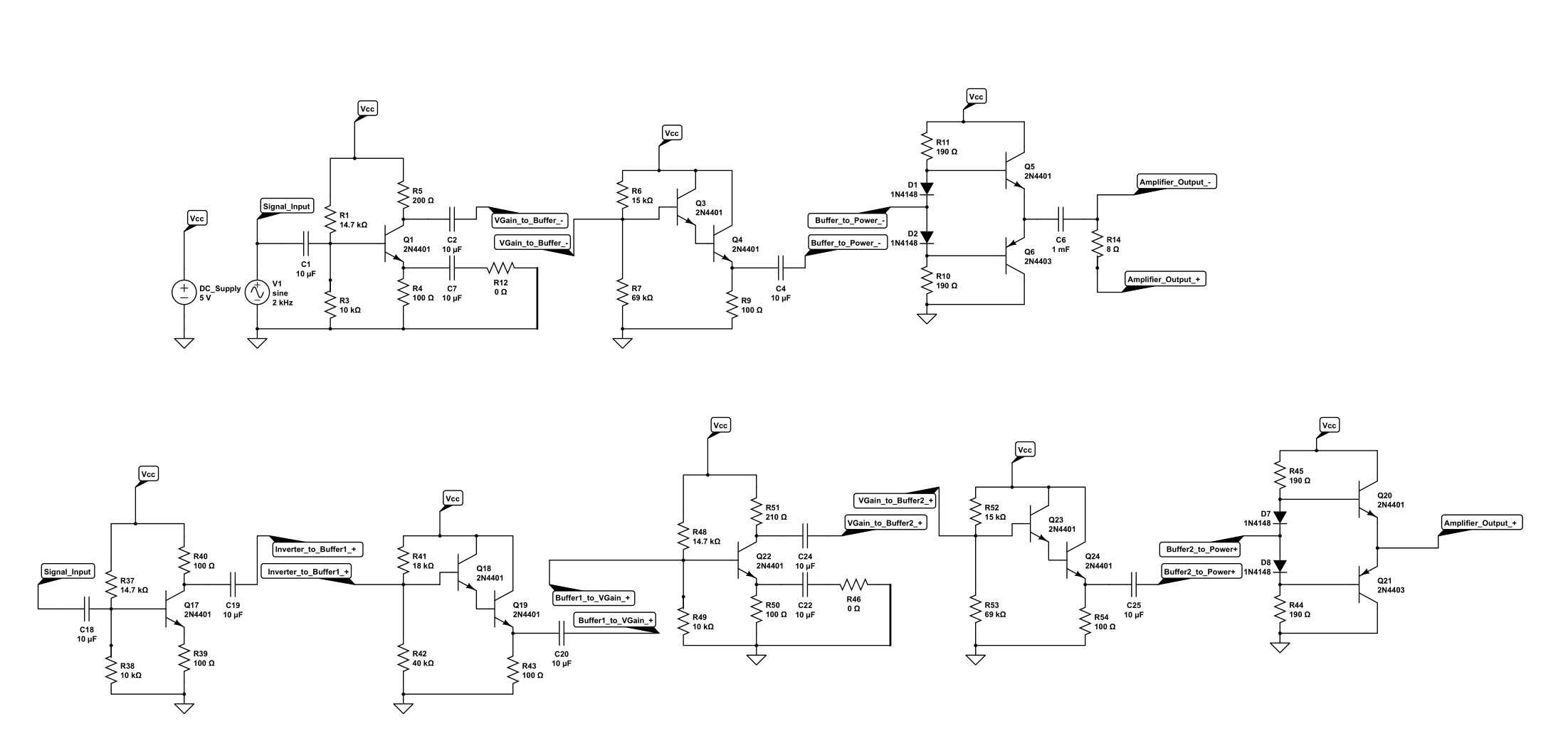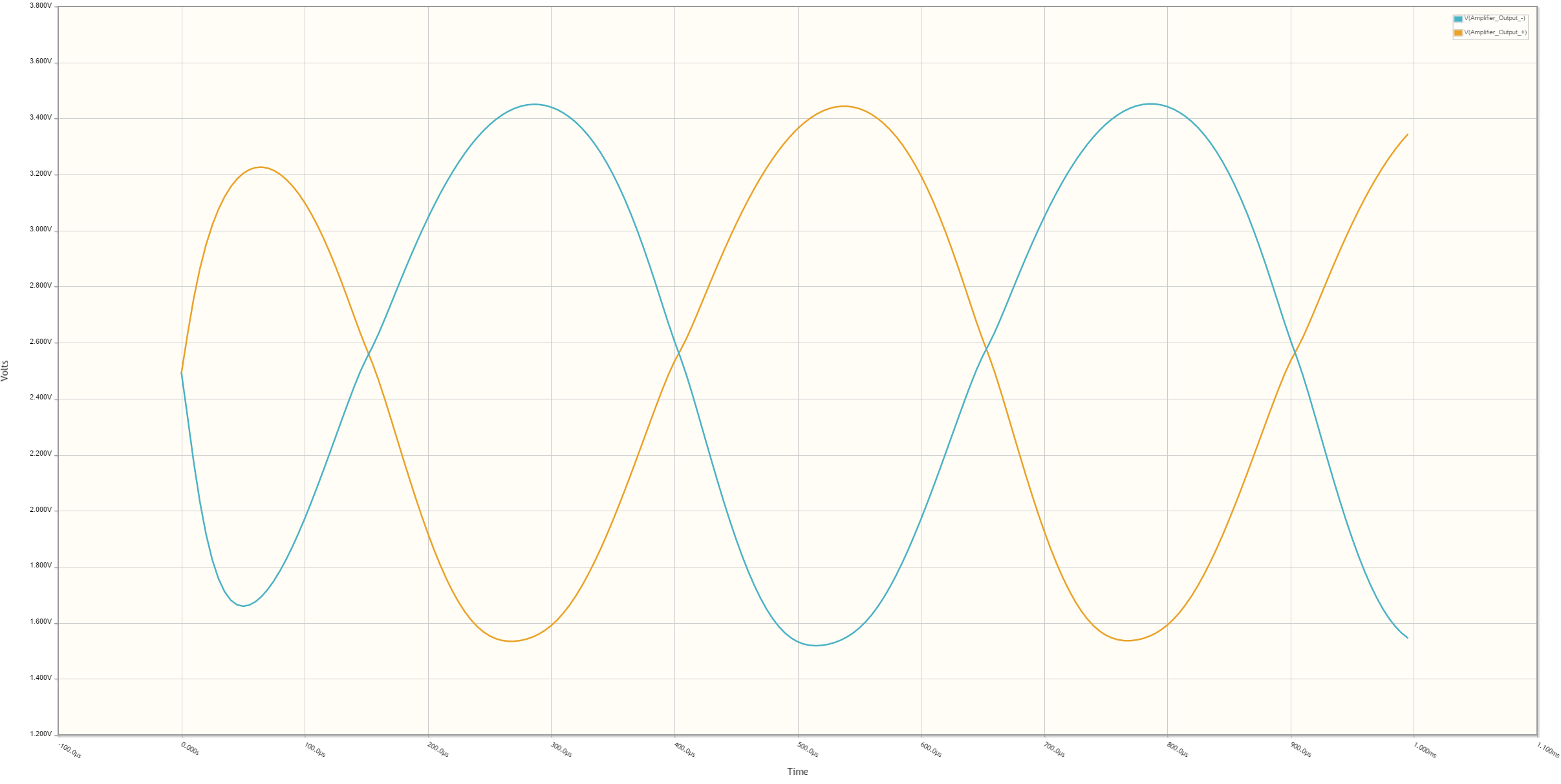For my Electronics II class, I designed a discrete BJT amplifier circuit including a VGain, Buffer, and Power stage.
I succeeded in meeting the specs, and the next step is to improve our design in one of a few specific ways. I chose to improve the power output of my circuit. My plan has been to build two amplifier channels and bridge them.
To do so, I have added an inverter and a second buffer stage to the second channel. Currently I have the circuit set up in CircuitLab, and it simulates satisfactorily. The circuit is attached, along with a plot of the output.
My question is two fold.
The first arises because when the channels weren't balanced, I was getting an ever increasing static voltage at the output. I want to be able to tie the output to ground if possible. I found that adding a 1H inductor could do so, but I don't want to add a 1H (LOL) inductor to the output. Is this circuit safe to build, will I see real results like my simulation, and is there any way I can tie my output to ground so the DC offset is 0V?
Two, do you have any recommendations to decrease distortion, or increase power?


